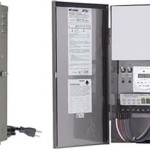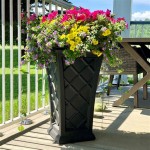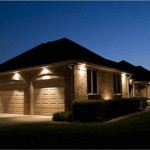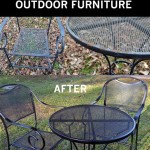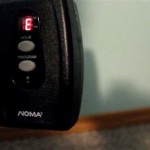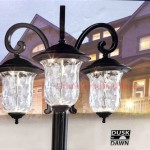Shine a Light on Culinary Delights: A Guide to Outdoor Kitchen Lights
An outdoor kitchen extends living space and offers a unique entertainment venue. Proper lighting is crucial for both functionality and ambiance. Choosing the right outdoor kitchen lights involves considering various factors, from safety and practicality to aesthetics and energy efficiency. This guide illuminates the key aspects of selecting and installing outdoor kitchen lighting.
Task Lighting: Illuminating the Culinary Workspace
Task lighting is the cornerstone of a functional outdoor kitchen. It provides focused light for safe food preparation and grilling. Bright, directed light over countertops, cutting boards, and cooking surfaces is essential. Under-cabinet lighting eliminates shadows and ensures precise work. Consider adjustable fixtures for customized illumination.
Ambient Lighting: Setting the Mood
Ambient lighting creates the overall atmosphere of the outdoor kitchen and surrounding areas. String lights, lanterns, and pathway lights contribute to a warm and inviting environment. Wall-mounted sconces and recessed lighting offer a more subtle and sophisticated ambiance. Dimmable features allow for adjusting the light levels to suit the occasion.
Accent Lighting: Highlighting Key Features
Accent lighting draws attention to specific elements, enhancing the visual appeal of the outdoor kitchen. Uplighting trees or architectural features adds drama and depth. Downlighting showcases textures and creates interesting patterns. Highlighting specific areas, such as a bar or dining area, adds a touch of elegance.
Safety and Security Lighting: Protecting Your Investment
Outdoor kitchen lighting plays a vital role in safety and security. Well-lit pathways and steps prevent accidents. Motion sensor lights deter unwanted visitors and enhance security. Consider incorporating security cameras with integrated lighting for added protection.
Choosing the Right Fixtures: Durability and Weather Resistance
Outdoor fixtures must withstand the elements. Select fixtures with high Ingress Protection (IP) ratings, indicating resistance to dust and moisture. Materials like stainless steel, aluminum, and copper offer durability and corrosion resistance. Shatterproof lenses and weatherproof seals are crucial for longevity.
Energy Efficiency: Reducing Environmental Impact
Energy-efficient lighting solutions reduce electricity consumption and contribute to a greener environment. LED lights offer long lifespans, consume less energy, and produce less heat compared to traditional incandescent bulbs. Solar-powered lights provide an eco-friendly option for certain applications.
Installation and Wiring: Professional Expertise
Proper installation is essential for safety and functionality. Consult a qualified electrician for wiring and connection to the main power supply. Ensure all wiring is weatherproof and protected from the elements. Professional installation ensures compliance with local building codes and regulations.
Lighting Controls: Convenience and Customization
Lighting controls enhance convenience and allow for customization. Timers automate lighting schedules, while dimmers adjust the intensity of the light. Smart lighting systems enable remote control and integration with other smart home devices. Consider incorporating different lighting zones for independent control.
Planning and Design: Creating a Cohesive Lighting Scheme
Careful planning is crucial for achieving a cohesive and effective lighting scheme. Consider the layout of the outdoor kitchen, the surrounding landscape, and the desired ambiance. Create a lighting plan that addresses both functional needs and aesthetic preferences. Consult with a lighting designer for professional guidance.
Maintenance and Care: Ensuring Longevity
Regular maintenance extends the lifespan of outdoor lighting fixtures. Clean fixtures periodically to remove dirt and debris. Check for and replace any damaged bulbs or components promptly. Proper maintenance ensures optimal performance and longevity.
Budget and Cost Considerations: Investing Wisely
Establish a budget for outdoor kitchen lighting that aligns with overall project costs. Consider the cost of fixtures, wiring, installation, and ongoing maintenance. Explore different lighting options to find the best balance between quality, functionality, and affordability.
Material Selection: Aesthetics and Durability
The materials used for outdoor kitchen lighting fixtures contribute to both aesthetics and durability. Choose materials that complement the overall design of the outdoor kitchen and withstand the elements. Consider the style of the home and surrounding landscape when selecting fixture materials.
Placement and Spacing: Optimizing Illumination
Strategic placement and spacing of lighting fixtures are essential for optimizing illumination. Consider the size and layout of the outdoor kitchen, as well as the tasks performed in each area. Ensure even distribution of light and avoid creating dark spots or glare.

Tips For Outdoor Kitchen Lighting Peterson S Landscape Maintenance

Outdoor Kitchen Lighting Ideas For Your Home Shafer Electric

10 Outdoor Kitchen Lighting Ideas 2024 Brighten The Spot Design Countertops

Outdoor Kitchen Grill Lighting Ideas

Outdoor Lighting

Outdoor Kitchen Lighting Ideas Tips For Northern Virginia Homeowners

8 Outdoor Kitchen Lighting Ideas
Getting The Right Lighting For Your Outdoor Kitchen In Lexington Northern Lights

Outdoor Kitchen Lighting Trends

Outdoor Kitchen Lighting 4 Ideas You Should Consider
Related Posts
